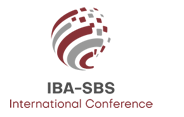The role of Green Work Engagement as an intermediary mechanism for the impact of Green Human Resource Management on the Green Behavior of Higher Education Employees
Abstract/Description
Purpose: The goal of this study is to create a social exchange theory (SET) based model to explain how green human resource management impacts employee on-the-job, off-the-job, and green innovative work behaviors (GIWB). Based on the job demand resource model and SET, this study contends that the mediating function of green work engagement (GWE) can account for the relationship described above.
Design, method, and strategy - According to a self-administered survey n.168 employees at higher education institutions in Pakistan are a source of information. The primary statistical method used to test the research hypotheses was partial least squares structural equation modeling.
Findings - The results show that green human resource management (GHRM) significantly predicts workers' green behavior at work, green behavior away from work, and GIWB. In addition, it was demonstrated that GWE was a significant intervention mechanism that helped to explain the relationship mentioned above.
Practical ramifications - The findings offer insightful information to higher education policymakers on how GHRM might help employees' environmental performance.
Value and originality - A number of factors make this paper. First, it broadens our understanding of GHRM. It also fills in knowledge gaps regarding GHRM in higher education settings, which is a second advantage. This study's third and most significant contribution is the improvement of GIWB brought about by GHRM, with GWE serving as a mediating variable between GHRM and employee green behavior.
Keywords
Higher Education, Green Innovative Work Behaviors, Green Human Resource Management, Green Work Engagement, in-role Green Behaviors
Track
Management
Session Number/Theme
3D
Session Chair
Dr. Rameez Khalid; Dr. Muhammad Imran
Start Date/Time
27-5-2023 2:30 PM
End Date/Time
27-5-2023 4:30 PM
Location
G-13, AMAN CED, Ground Floor
Recommended Citation
Larik, K. A., Shah, I. A., & Lashari, A. (2023). The role of Green Work Engagement as an intermediary mechanism for the impact of Green Human Resource Management on the Green Behavior of Higher Education Employees. IBA SBS 4th International Conference 2025. Retrieved from https://ir.iba.edu.pk/sbsic/2023/program/33
COinS
The role of Green Work Engagement as an intermediary mechanism for the impact of Green Human Resource Management on the Green Behavior of Higher Education Employees
G-13, AMAN CED, Ground Floor
Purpose: The goal of this study is to create a social exchange theory (SET) based model to explain how green human resource management impacts employee on-the-job, off-the-job, and green innovative work behaviors (GIWB). Based on the job demand resource model and SET, this study contends that the mediating function of green work engagement (GWE) can account for the relationship described above.
Design, method, and strategy - According to a self-administered survey n.168 employees at higher education institutions in Pakistan are a source of information. The primary statistical method used to test the research hypotheses was partial least squares structural equation modeling.
Findings - The results show that green human resource management (GHRM) significantly predicts workers' green behavior at work, green behavior away from work, and GIWB. In addition, it was demonstrated that GWE was a significant intervention mechanism that helped to explain the relationship mentioned above.
Practical ramifications - The findings offer insightful information to higher education policymakers on how GHRM might help employees' environmental performance.
Value and originality - A number of factors make this paper. First, it broadens our understanding of GHRM. It also fills in knowledge gaps regarding GHRM in higher education settings, which is a second advantage. This study's third and most significant contribution is the improvement of GIWB brought about by GHRM, with GWE serving as a mediating variable between GHRM and employee green behavior.



